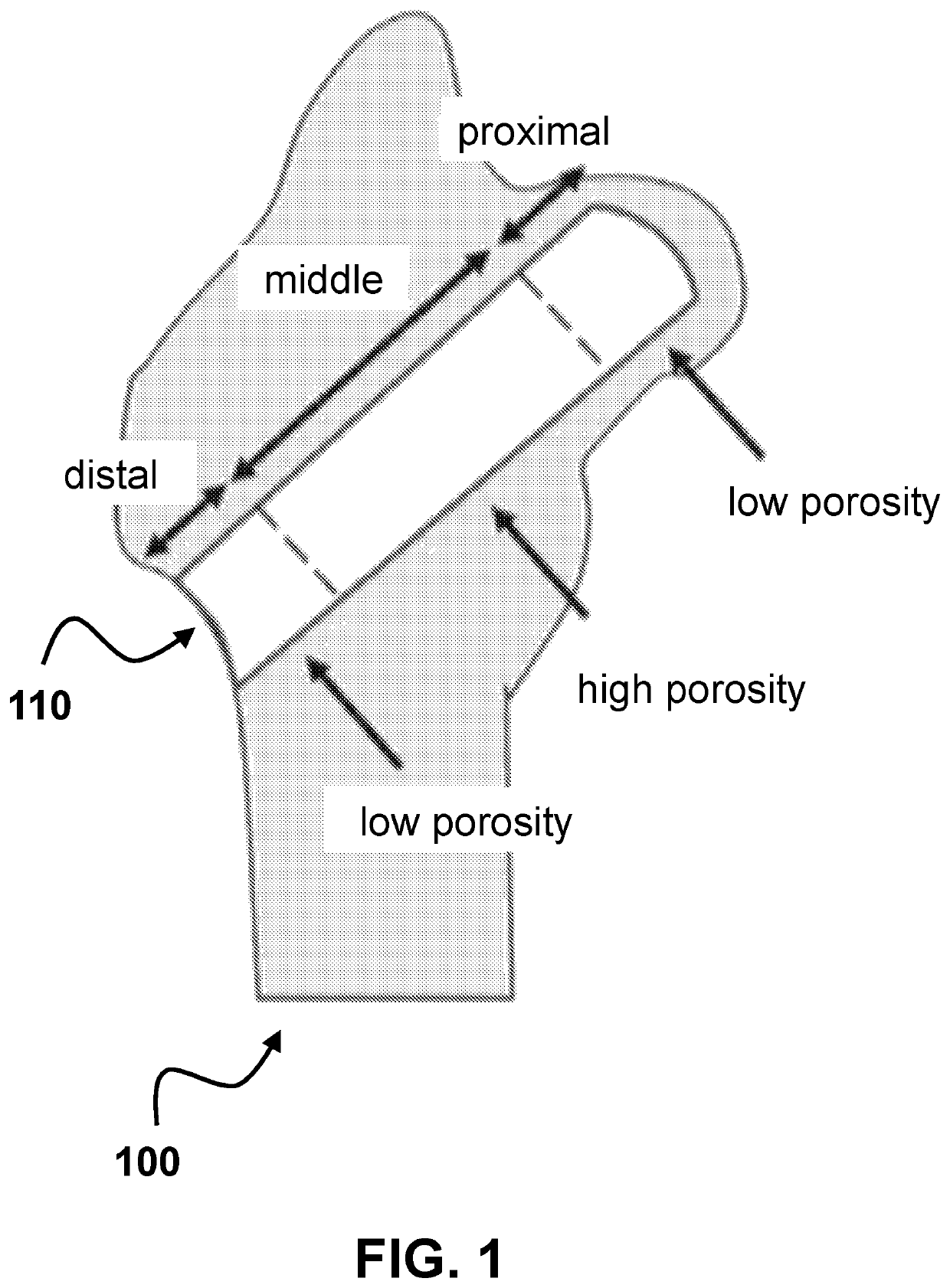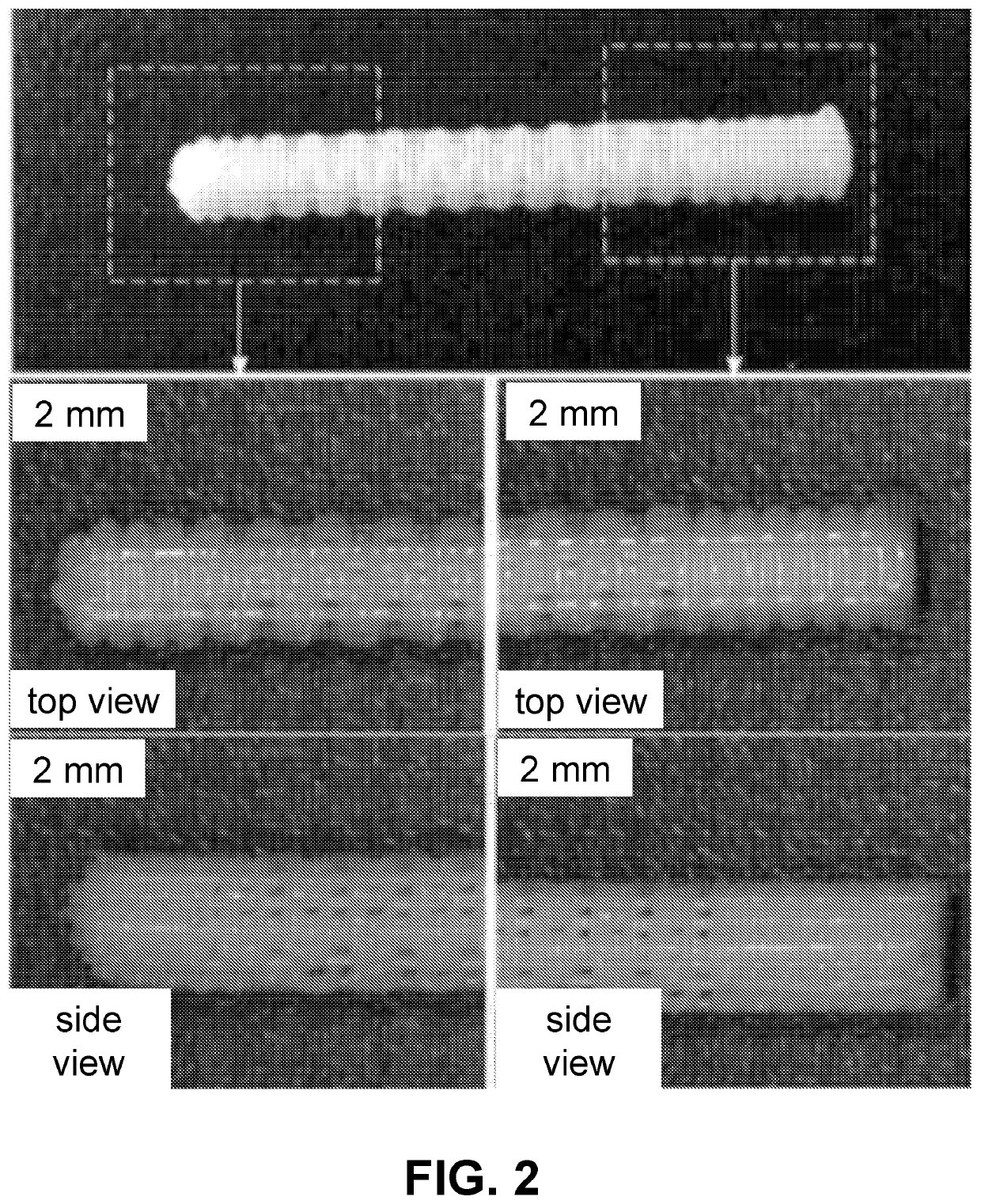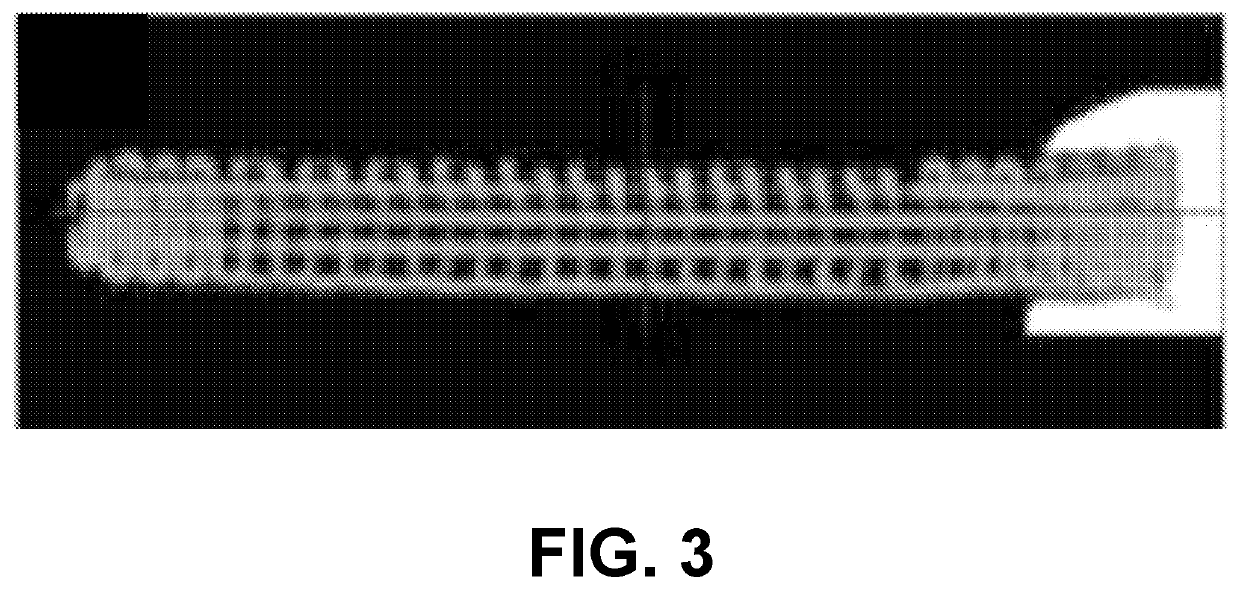Customized load-bearing and bioactive functionally-graded implant for treatment of osteonecrosis
a bioactive, load-bearing technology, applied in the direction of osteosynthesis devices, prosthesis, manufacturing tools, etc., can solve the problems of limited success, inability to prevent collapse or provide lasting improvement, and suffer from several limitations, so as to improve integration capability, promote bone growth, and improve the effect of vascular invasion and osseointegration
- Summary
- Abstract
- Description
- Claims
- Application Information
AI Technical Summary
Benefits of technology
Problems solved by technology
Method used
Image
Examples
Embodiment Construction
Materials and Methods
[0032]Medical-grade poly(ε-caprolactone) (mPCL) pellets (Aldrich Chemical Company) with density of 1.145 g / cm3 (Mn=80,000) were used as received. β-tricalcium phosphate (β-TCP) powder with a specific surface area of 17 m2 / g and particle size of mesh 60 was obtained from Nanocerox, Inc. (Ann Arbor, Mich.). A slurry was prepared by dispersing β-TCP powder in acetone at 50° C., followed by gradual incorporation of PCL pellets. A PCL:β-TCP:acetone weight ratio of 80:20:400 was used. Vigorous mechanical stirring was performed for 3 h to ensure the homogenous distribution of the β-TCP particles in the PCL slurry. The slurry was poured out evenly into glass plates, left overnight to evaporate, and further dried in a vacuum overnight to remove any residual acetone. Then, as raw material for AM process, the material was shaped as long filaments via warming up and extruding through a 2.2-mm orifice of an in-house-made filament-maker machine.
Design and Fabrication of PCL-β...
PUM
| Property | Measurement | Unit |
|---|---|---|
| mechanical strength | aaaaa | aaaaa |
| porosity | aaaaa | aaaaa |
| porosity | aaaaa | aaaaa |
Abstract
Description
Claims
Application Information
 Login to View More
Login to View More - R&D
- Intellectual Property
- Life Sciences
- Materials
- Tech Scout
- Unparalleled Data Quality
- Higher Quality Content
- 60% Fewer Hallucinations
Browse by: Latest US Patents, China's latest patents, Technical Efficacy Thesaurus, Application Domain, Technology Topic, Popular Technical Reports.
© 2025 PatSnap. All rights reserved.Legal|Privacy policy|Modern Slavery Act Transparency Statement|Sitemap|About US| Contact US: help@patsnap.com



